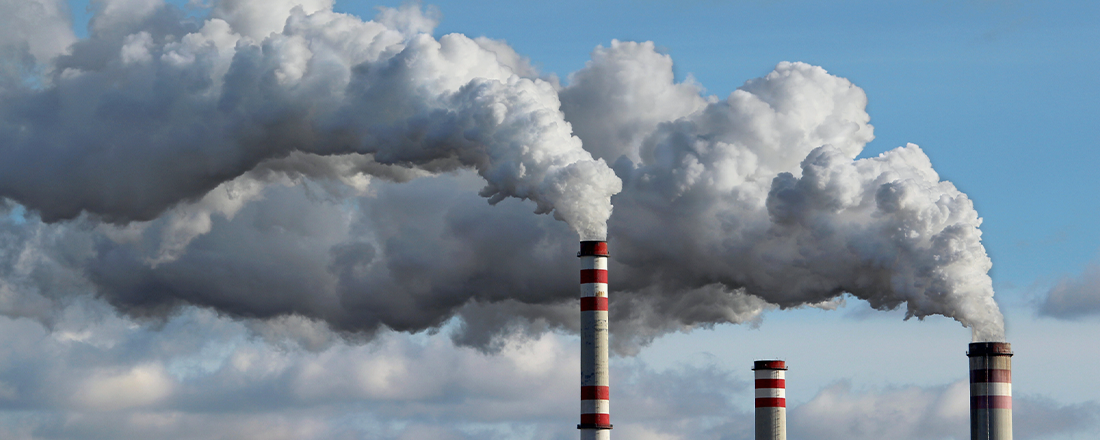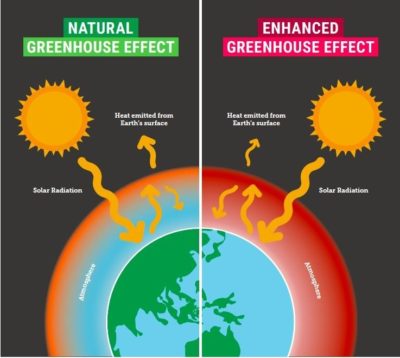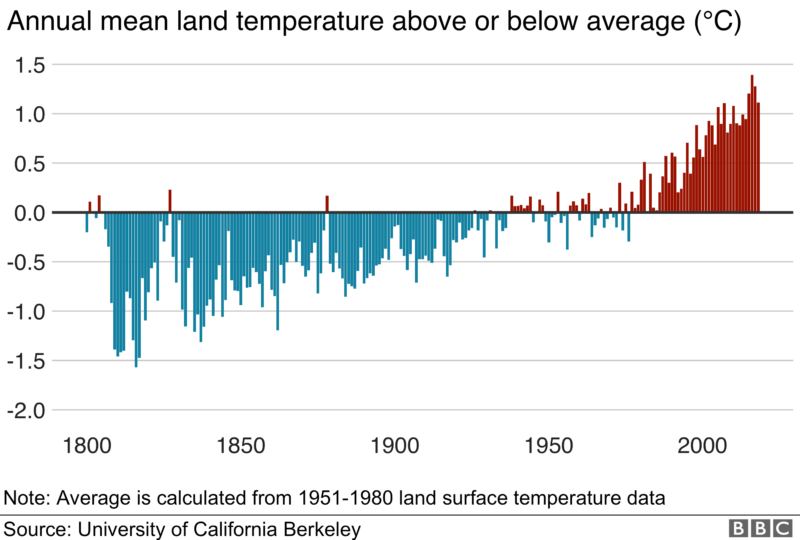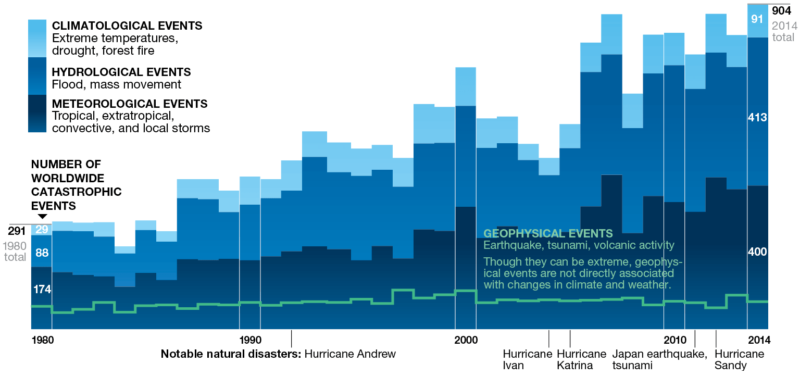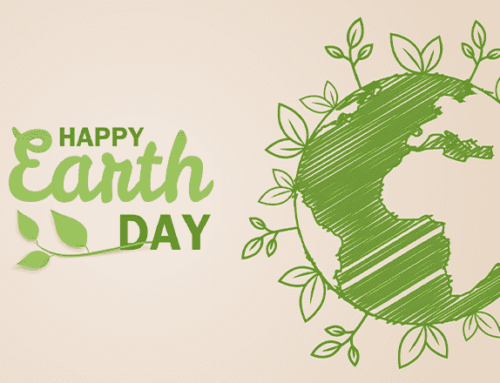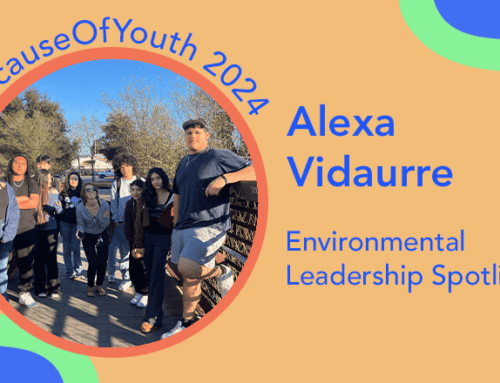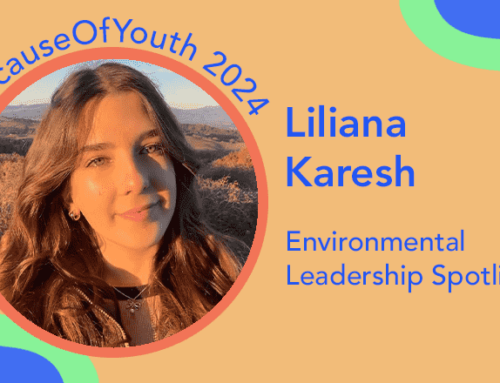Planet Earth is often referred to as the “Goldilocks” planet. We are located at just the right distance from the sun to soak up the solar radiation that keeps us at a comfortable temperature for life. A portion of the solar energy that reaches us is absorbed by the earth and warms the planet’s surface. The remainder of the solar radiation is reflected off the earth’s surface and back into the atmosphere, where it’s trapped by naturally occurring atmospheric gases. This heat-trapping effect that keeps our planet at the right temperature is called the greenhouse effect.
Unfortunately, human activity has added greenhouse gases (GHGs) to our atmosphere, and these GHGs are continuing to trap heat and cause climate change. Climate change refers to the recent significant shifts in average global weather patterns caused by human activity. While weather can change every hour, climate shifts, such as changes to average year-round temperatures or seasonal rainfall, occur naturally over long periods of time, sometimes even millions of years.
Climate change is the biggest threat facing the world today. Global shifts in temperature and weather patterns have resulted in catastrophic impacts to the environment and human populations. A few examples are the lengthening wildfire season in California, worsening tropical storms in the Gulf of Mexico, and frigid winter freezes on the East Coast. To avoid the worst impacts of climate change, we must immediately reduce our emissions to help keep our planet livable for future generations.
How do we measure climate change?
Current scientific evidence shows that our climate is changing at an unprecedented rate due to human activity. Atmospheric CO₂ concentrations have increased by 47% since the start of the industrial revolution. In the same period, global temperatures have increased by 2 degrees Fahrenheit. The last decade had the warmest global climate on record. In the United States, the Fourth National Climate Assessment estimates that 93%-123% of observed warming from 1951 to 2010 can be attributed to human-produced GHGs.
(Graphic: BBC)
What causes climate change?
Over 90% of climate scientists agree that human activity is the primary cause of climate change. Most of this change can be traced back to the following sectors:
- Electricity and Heat Generation: Burning fossil fuels such as coal and natural gas for electricity and heat accounts for a third of global GHG emissions.
- Transportation: The transportation sector makes up the largest share of GHG emissions (29%). These emissions primarily come from burning gasoline and diesel.
- Deforestation: Cutting down trees stops them from removing carbon from our atmosphere and causes the release of the carbon that they’ve stored during their lifetime. Deforestation causes around 10% of global emissions.
- Agriculture: Direct emissions from agriculture account for around 17% of global emissions. Agriculture indirectly leads to an additional 7%-14% of emissions through deforestation and land use changes.
How does climate change affect us?
Weather
Climate change causes drastic changes to global weather patterns, creating extreme weather events. As the atmosphere heats up, it impacts land temperature, water temperature, and water level. These changes lead to such extreme weather events as prolonged droughts, lengthened wildfire seasons, unprecedented floods, and stronger tropical storms.
(Graphic: National Geographic)
Displacement
Recurring droughts and flooding, sea level rise, and wildfires are making previously populated areas uninhabitable. Entire communities are displaced and must be relocated due to these events. Weather-related events have displaced 23.1 million people across the globe each year since 2010.
Health Risks
Climate change contributes to a variety of human health risks and, according to the World Health Organization, is expected to cause around 250,000 additional deaths per year by 2030. Higher temperatures and precipitation changes increase the prevalence of food and waterborne diseases and insect-borne diseases like Lyme disease and malaria. Warmer global temperatures are also linked to increased air pollution, longer allergy seasons, and increased mold, which often trigger respiratory illnesses.
Ecosystem Collapse
Ecosystem collapse due to climate change is evident across the globe, from coral reefs to the Arctic to tropical rainforests. Many plants and animals will be forced to relocate to areas with more suitable climates or face extinction. This migration of certain animals may disrupt food chains and cause the collapse of delicate ecosystems.
What can we do?
You can reduce your carbon footprint by choosing sustainable transportation, cutting down on waste, and buying locally. Communities can advocate for climate solutions like renewable energy, sustainable agriculture, and a ban on single-use plastics. Communities can also improve their climate resilience by preparing for climate-related events. Many organizations across the world are already fighting for these climate solutions. Stay up to date with MCE’s blog to learn more about the impacts of climate change, the work being done in your community, and how you can join the movement.

